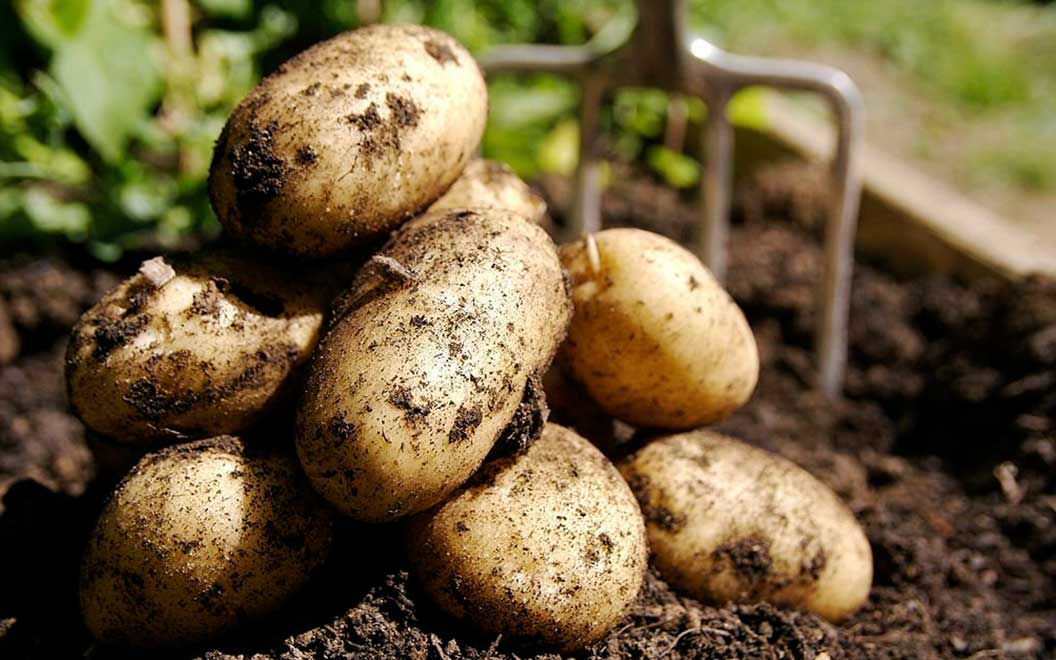Potatoes have been widely consumed by humans globally and are available all year long. In this article, the amazing facts and benefits about the food staple potato that has been overlooked by its consumers will be examined.
Origin
Potatoes were introduced to Europe from the Americas in the second half of the 16th century by the Spanish. Today, they are a staple food in many parts of the world and an integral part of much of the world’s food supply.
As of 2014, potatoes were the world’s fourth-largest food crop after maize (corn), wheat, and rice. Following millennia of selective breeding, there are now over 5,000 different types of potatoes. Over 99% of potatoes presently cultivated worldwide descended from varieties that originated in the lowlands of south-central Chile. The importance of the potato as a food source and culinary ingredient varies by region and is still changing.
Facts about Potato
Potatoes are now a food staple in Europe, parts of the Americas and Africa. Potatoes are important staples for 1000 million people in the developing world. They account for roughly sixteen per cent (16%) of the food eaten by half the population of sub-Saharan Africa.
There are about 5,000 varieties of potato worldwide. Three thousand of them are found in the Andes alone, mainly Peru, Bolivia, Ecuador, Chile and Columbia. Apart from the 5000 cultivated varieties, there are about 200 wild species and subspecies, many of which can be cross-bred with cultivated varieties. There are close to 4,000 species of potato each of which has specific culinary attributes. Around eighty varieties are commercially available in the market. In general, varieties are categorized into a few main groups based on common characteristics such as russet potato (rough brown skin), red potatoes, white potatoes, yellow potatoes and purple potatoes. The leading producers of potatoes are China, India, Russia, Ukraine and USA.
Introduced to East Africa by British farmers in the 1880s, the potato has grown in importance – both as a staple food and as a source of income for farmers – over the past 30 years; therefore, it remains an essential crop on the African continent.
The consumption of potatoes has been falling in many countries since the beginning of the 1970s mainly because urban populations have found it cheaper and easier to buy imported cereals. Many countries are experiencing a similar shift away from the traditional foods, but there is a growing recognition of the importance of traditional crops in nutrition.
Potatoes can be prepared in many ways. It could either be skin-on or peeled, whole or cut up, seasoned or without seasoning. The only requirement involves cooking to swell the starch granules. Most potato dishes are served hot but some are first cooked, and then served cold, notably potato salad potato chips (crisps).
Common dishes are French fries, mashed potatoes, baked potatoes, boiled or steamed potatoes, potato salad, waffle fries, harsh browns, among others. Unlike many foods, potatoes can be easily cooked in a microwave oven and still retain nearly all of their nutritional value, provided they are covered in a ventilated plastic wrap to prevent water from escaping.
Nutritional Value
Potatoes may usually not be considered as nutritious. However, they have a long list of surprising health and nutritional benefits where some of which include;
- Blood clot prevention
- Speed up weight loss
- Anticancer diet
- Blood pressure control
- Rich in antioxidants
- Fiber boost
- Good for the nerves among others
The life shell of potatoes can be extended by knowing the best ways to preserve them. Uncooked potatoes can be stored in a cool dark place with plenty of circulation and not in the refrigerator, prevent cut and peeled slices from browning by covering with water or vacuum sealing, potatoes should be kept out of the sunlight and they shouldn’t be stored next to onions. With all said and done, potatoes can stay for a longer period without going bad and also reduce food waste.
In conclusion, the purpose of this article was to identify some numerous varieties of potatoes and how important they have become in relation to traditional food consumption. It also touched on some dish’s potatoes can serve, their nutritional value and various ways of preserving them. These are only but a few; there are a lot more alluring facts about potatoes that are worth exploring.


Comments are closed.